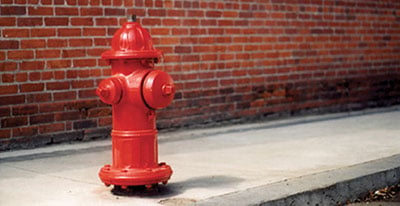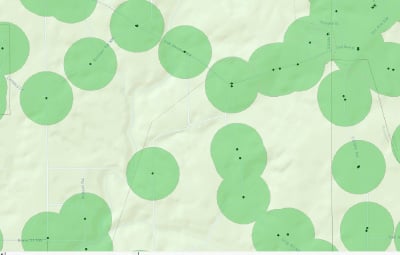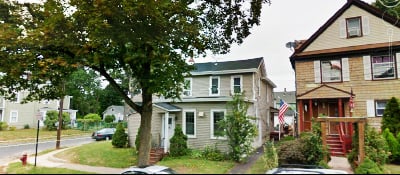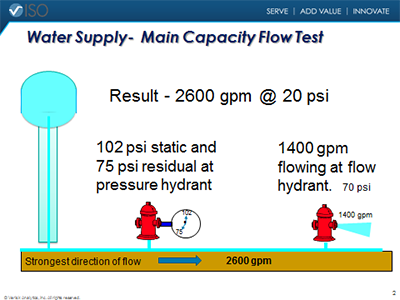 While driving around a typical tree-lined residential neighborhood, have you ever wondered how much water is needed to protect that area from fire? Did you know that greater emphasis is often placed on the rate of flow for commercial and mixed-use areas, even though residential areas generally occupy more space and have greater population density? Do you ever consider how the distance between hydrants could cause a delay in fire department operations?
While driving around a typical tree-lined residential neighborhood, have you ever wondered how much water is needed to protect that area from fire? Did you know that greater emphasis is often placed on the rate of flow for commercial and mixed-use areas, even though residential areas generally occupy more space and have greater population density? Do you ever consider how the distance between hydrants could cause a delay in fire department operations?
Because fire protection is a key variable insurers use to evaluate the risk factors in rating a homeowners policy, the answers to those questions and many others are vital. According to the U.S. Fire Administration (USFA) National Fire Data Center (June 2017), an estimated 243,700 one- and two-family residential building fires were reported to fire departments in the United States each year from 2013 to 2015. The fires caused an estimated 2,175 deaths, 7,575 injuries, and $5.3 billion in property losses.
To assist the insurance industry with the necessary data analytics, ISO (a Verisk business) collects, maintains, and analyzes a vast amount of water system information from the 45,521 fire protection areas we evaluate throughout the country. It’s part of our nationally recognized fire protection rating program, Public Protection Classification (PPC®). And one of the first lines of defense for residential fires is the 8.64 million fire hydrants in our database.
Where are the fire hydrants?
One of the first considerations for a community fire service is to have an up-to-date map of area fire hydrants. That information is valuable, but it’s not always available 24/7—although it should be. Sure, seasoned firefighters or water company personnel can probably tell you everything about the water system, but they’re not always available.
ISO currently has more than 18,000 public and private water providers with 36,149 unique water supply system polygons mapped in our PPC GIS database. They range from large municipal water systems to individual hydrants, including those 8.64 million in our database. The hydrants are part of our mapping database, and we use them to calculate distances between buildings and hydrants. There are several codes and reference standards available regarding hydrant spacing, but the authority having jurisdiction often establishes the requirements.

ISO evaluates hydrant distribution by examining the number and type of hydrants within 1,000 feet of each representative building. We also look at the distance from every hydrant to the subject building, measured by how the apparatus can lay hose.
Buildings within 5 road miles of a recognized fire station and within 1,000 feet of a fire hydrant receive a better community protection classification than those beyond 1,000 feet of a hydrant. That’s why insurance underwriters use hydrant placement information so extensively.
Will the hydrants work—and work properly?
It’s a great start to know where the hydrants are, but you also need to know if they’ll operate properly when called upon in an emergency. It’s vital to have a maintenance program and reporting system in place that assess and maintain hydrants to protect quiet, remote neighborhoods. You need to flow test the fire hydrants to be sure they supply needed fire flow in the gallons per minute (gpm) necessary to combat any residential fire.
Residential neighborhoods can vary greatly from town to town. In some neighborhoods, homes were built close together creating serious fire exposure concerns. In others, the greater distance between homes reduces the concern. When calculating the needed fire flow in a residential area for one- and two-family dwellings not exceeding two stories in height, the distance (exposure factor) between buildings is used. See the accompanying chart.
| Distance between buildings | Needed fire flow (duration 1 hour) |
|---|---|
| More than 30 feet | 500 gpm |
| 21 to 30 feet | 750 gpm |
| 11 to 20 feet | 1,000 gpm |
| 0 to 10 feet | 1,500 gpm |

Buildings 10 feet or less from each other require at least 1,500 gpm for a minimum of two hours for firefighting. These buildings might have additional exposures such as windows. That’s a great deal of water for some residential areas. However, for full PPC credit, that’s the requirement for fire extinguishment and the protection of neighboring homes.
The American Water Works Association (AWWA) Manual M-17 recommends that a community test all parts of a water distribution system every ten years (more often if needed). For full PPC credit, the system should be tested every five years or less. ISO doesn’t give credit for flow tests ten years or older.

For further flow testing and hydrant maintenance information, refer to AWWA M-17 (Fire Hydrants: Installation, Field Testing and Maintenance).
Not all water systems meet the ISO minimum criteria for water resources to fight fires. Of the 36,149 systems ISO has mapped, 3,952 are noncreditable. To earn a creditable rating (PPC 8 or better), the water supply system must deliver at least 250 gpm for a period of two hours, in addition to the community’s maximum daily rate of consumption for other purposes.
The right data
Data on hydrants and other parts of community water systems comes from reviewing residential neighborhoods. Our PPC program surveys the communities, obtains the data, analyzes it often, and provides information to communities and insurers. That results in better preparation for firefighting budgets, capital improvements, system/hydrant maintenance, the ISO evaluation, and most important, fire department training before a fire emergency.
More information on residential fires in the United States is available at the Federal Emergency Management Agency (FEMA) website. If you wish to know more about ISO, PPC, and our water system evaluation, e-mail me at azampella@iso.com.
